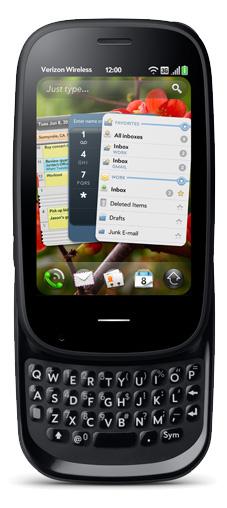
Since the introduction of webOS, we haven't really seen anything awe inspiring or truly impressive from the Palm front. Their 2010 lineup consisted of two different form factors, both of which are rather yawn-inducing, and five total devices; the Pre, Pre Plus, Pre 2, Pixi, and Pixi Plus. Thanks to HP, Palm has a second chance and may survive through what looks to be another daunting year in 2011. My question is, are they doing enough to compete in the midst of some mobile platform heavyweights?
The word coming from within the company is that they plan to release a smartphone every two months in 2011. That's a tall order for a company that took a nosedive earlier this year. To be honest though, when it comes to hardware, they may have it covered. While the Pre form-factor may not be the most popular, there is talk of a 5-inch all-touch phone called the Mansion, four or five different form factors, and a tablet. As long as they've learned that not everyone has pinpoint accuracy fingers, the problem I see is coming from the software side of things.
Don't get me wrong, I like webOS, the platform is clean and simple. But there aren't enough benefits that come from using a webOS device over any other platform. The iPhone and Android devices have better application support, better battery life, larger, clearer displays, and a more complete experience. The only real differentiation webOS has to offer is an awesome multi-tasking experience, but is multi-tasking really that important? I know a lot of people rely on it, but I'm not sure anyone needs a phone almost entirely dedicated to multi-tasking. Sure, you can open over 140 cards at a time, but that does no good if you don't have anything beyond the core apps worth using. Palm needs to come up with something new that really establishes their operating system, and cements its place in the market.
Whether people actually use them or not, the availability of applications has been the make-or-break feature of mobile platforms this year. Apple's App Store has topped 300,000 apps, Android Market reached 100,000 apps, RIM's BlackBerry App World has 10,000 apps, and Palm's App Catalog is still struggling with a mere 5,000 apps. Windows Phone 7 has only been around for a short while now, and they've already surpassed 3,000 applications. If Palm plans to stake their claim in the handset world, they will have to turn up the heat and start promoting development for their platform.
When webOS was introduced, all Palm had in their sights was BlackBerry OS 5.0, iOS, and Android 1.6. Now there is Windows Phone 7 which is gaining quite a bit of traction, BlackBerry 6 and QNX-based Tablet OS, Android 2.3 and 3.0 which bring some major changes since the earlier versions, and possibly other contenders like MeeGo. After seeing the screenshots of webOS 2.0, I certainly hope there is more going on that what meets the eye. I pray for Palm's sake that some serious work is going on under the hood and that their update can grab a little more attention that the first time around.